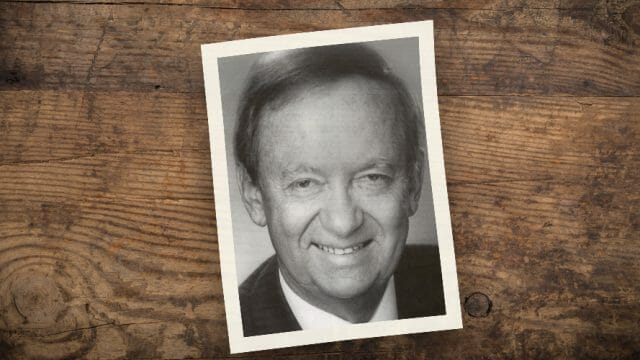Five new trends in missions

In November 15, 2022, the cry of a newborn baby somewhere on Planet Earth signaled that the world’s population had reached 8 billion. Chances are, with current world population trends, the baby was born somewhere in Africa. Experts say that by 2050 most population growth will happen in just eight countries: Democratic Republic of the Congo, Egypt, Ethiopia, Tanzania, India, Nigeria, Pakistan, and the Philippines.
Population data can be mind-boggling. Consider the island of Java. This relatively small Indonesian island has 148 million inhabitants. That’s more people than most countries of the world, including Russia, Canada, every single country in Europe, and every country on the continent of Africa except Nigeria.
Or think about Uttar Pradesh, just one of 28 states in India. Known to most of us as the home of the Taj Mahal, if Uttar Pradesh were a country, it would be the fifth most populous in the world.
THE POWER OF CITIES
Researchers tell us that in 2009 the world’s demographic center of gravity changed forever. For the first time in history, most people were living in cities. By 2050 two out of three people will be living in them.
Cities cover only 3 percent of the earth’s surface. But their power and influence dominate the world. Consider, for example, America’s northeast megalopolis, which extends from Boston down to Washington, D.C. It’s a relatively small geographic area, but consider its impact in four areas:
Education: An education epicenter, it’s home to hundreds of colleges and universities, including many Ivy League schools, such as Harvard, Yale, and Princeton. This matters, because what’s taught in university classrooms today sets the agenda for popular culture and people’s lives tomorrow.
Economics: It has the largest economic output of any megalopolis in the world. It’s the headquarters of major finance companies, including a third of the Fortune 500 global companies.
Information and entertainment: It’s home to the headquarters of the major American TV networks, and some of the world’s most influential media conglomerates and newspapers.
Politics: It’s home to such political powerhouses as the White House, the Capitol, and the United Nations. Decisions by a few here affect the lives of billions everywhere.
Also consider the influence of California’s urban entertainment and media hubs:
Hollywood: Located in just a few square miles in Los Angeles are Universal Studios, Walt Disney, Warner Brothers, Paramount Pictures, and more. The TV programs and movies produced in this small urban area are watched all over the world, from massive Asian cities to small rural African villages.
Silicon Valley: A few hundred miles north of Hollywood is Silicon Valley, near San Francisco. This small urban space contains the headquarters of such giant tech and social media companies as Twitter, YouTube, Instagram, Facebook, WhatsApp, Alphabet, and Apple. Can you imagine the power and influence emanating from this small urban space? If Facebook alone were a country, it would be the most populous country in the world.
CURRENT MISSIOLOGICAL TRENDS
Against this demographic backdrop, we can see five key missiological trends:
Business as Mission: There’s growing recognition of the untapped potential of urban centers of influence, tentmakers,* and church members refocusing their businesses for mission.
The United Nations has recommended what they call the “15-minute city” concept. The goal is for urban residents to be able to meet most of their daily needs within a 15-minute travel time by foot, bicycle, or public transport. What if Adventists committed to their own “15-minute city” concept? The goal would be to have a church, a church plant, an urban center of influence, or an Adventist-owned mission-focused business within a 15-minute travel time for anybody living in the world’s great cities.
Wholistic Mission: This is part of our foundation as Seventh-day Adventists. There should be no artificial separation of evangelism and care for people—they should be integrated into a wholistic mission as demonstrated by Jesus. Of course, our care for people should be no-strings-attached, and never conditional on people accepting Jesus or becoming Seventh-day Adventists.
Indigenous Mission Workers: Increasingly, Adventists in various regions of the world are taking responsibility for mission in their own territories. Global Mission pioneers—local laypeople—are planting churches among their own people groups. Indigenous leaders are taking ownership of mission. Although we still need hundreds more cross-cultural missionaries, increasingly their role should be to help empower local workers and to reach “unreached” people groups.
Global South Missionaries: The number of missionaries from the global south is steadily rising. When we look at the Adventist Church worldwide, we can see where our personnel strength lies. If the Seventh-day Adventist Church were a village of 100 people, 89 of them would come from Africa, Asia, and Inter- and South America. Those whom missionaries have blessed in the past are now increasingly turning to bless others.
Growth in Secular and Post-Christian Population: On March 21, 2021, 46.2 percent of people checked the box “Christian” in the British census. That meant for the first time in history, less than half the British population identified as Christian. Britain and Europe are a warning of what’s coming to the rest of the world. In America, for example, it’s expected that by 2050, if not before, the “Nones”—people who profess no religious belief—will outnumber Christians.
WRAP-UP
Jesus promised us that “this gospel of the kingdom will be preached in all the world” (Matt. 24:14). He didn’t say “hopefully,” or “perhaps,” or “maybe.” He said it will be preached. And God has invited us to participate in His mission of sharing love, hope, and salvation with all the world. As we look at the demographic and mission trends around us, may we be like the men of Issachar, who “understood the times” (1 Chron. 12:32, NIV). And may the Holy Spirit guide us to refocus our mission priorities, adapt our methods, and use our resources wisely.
* A tentmaker uses his or her profession to work in a restricted area of the world and share the good news about Jesus.








